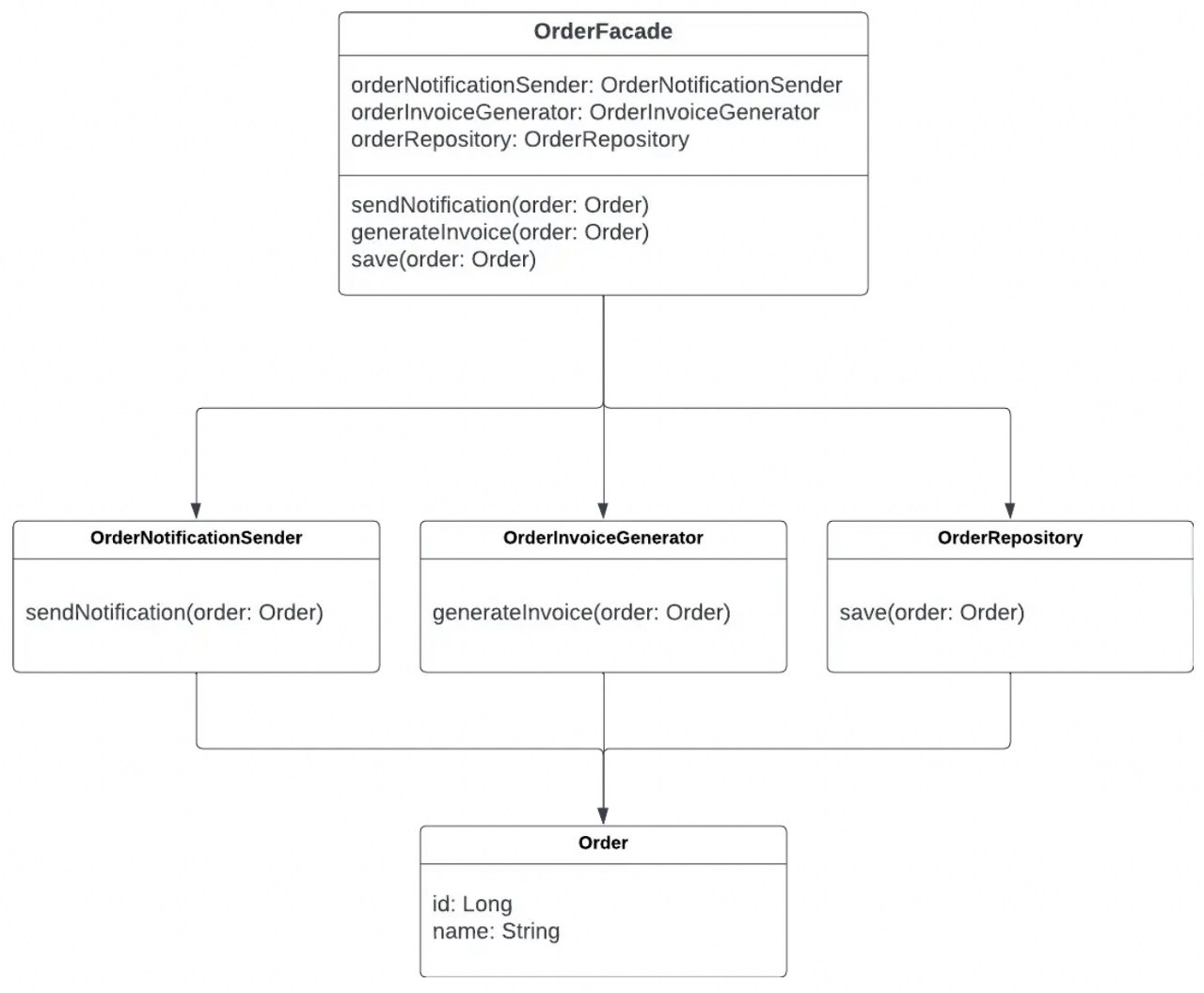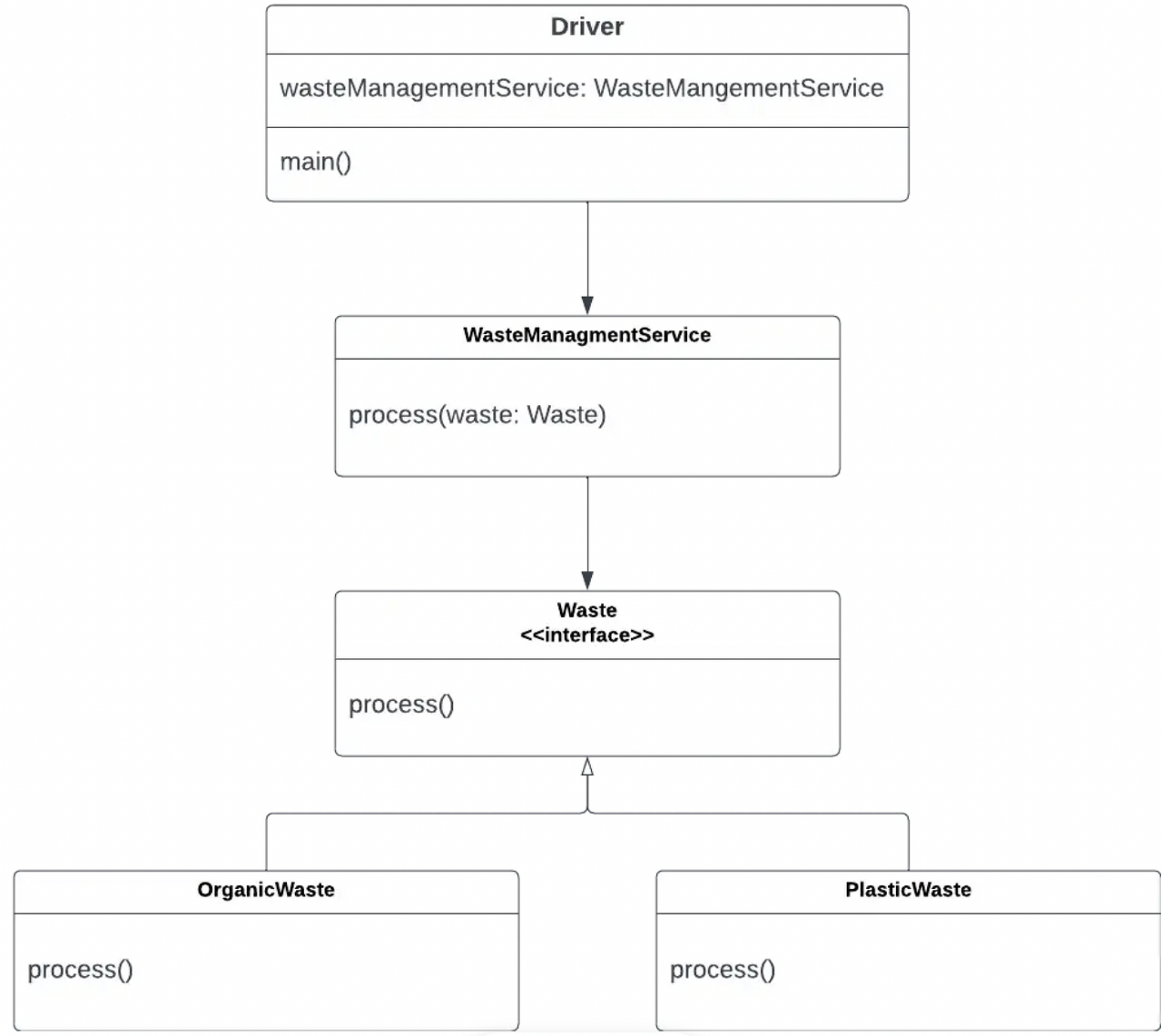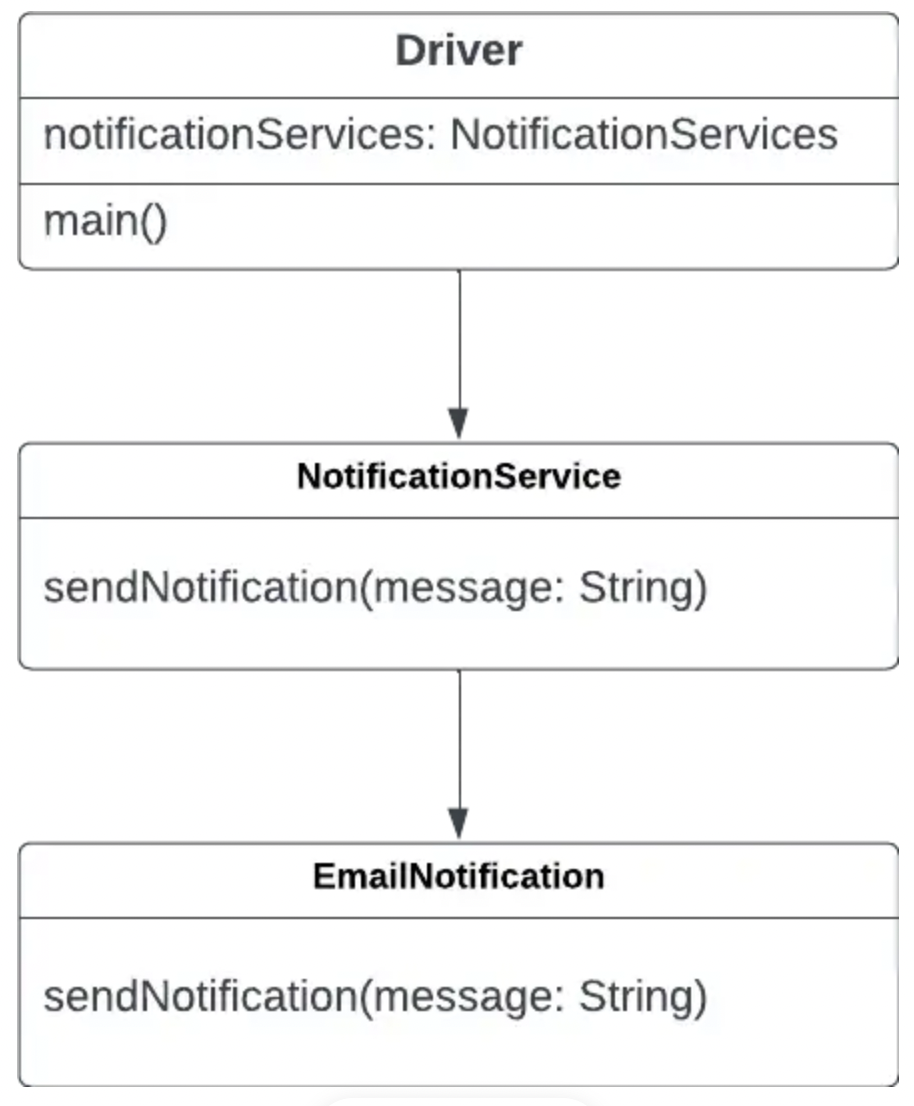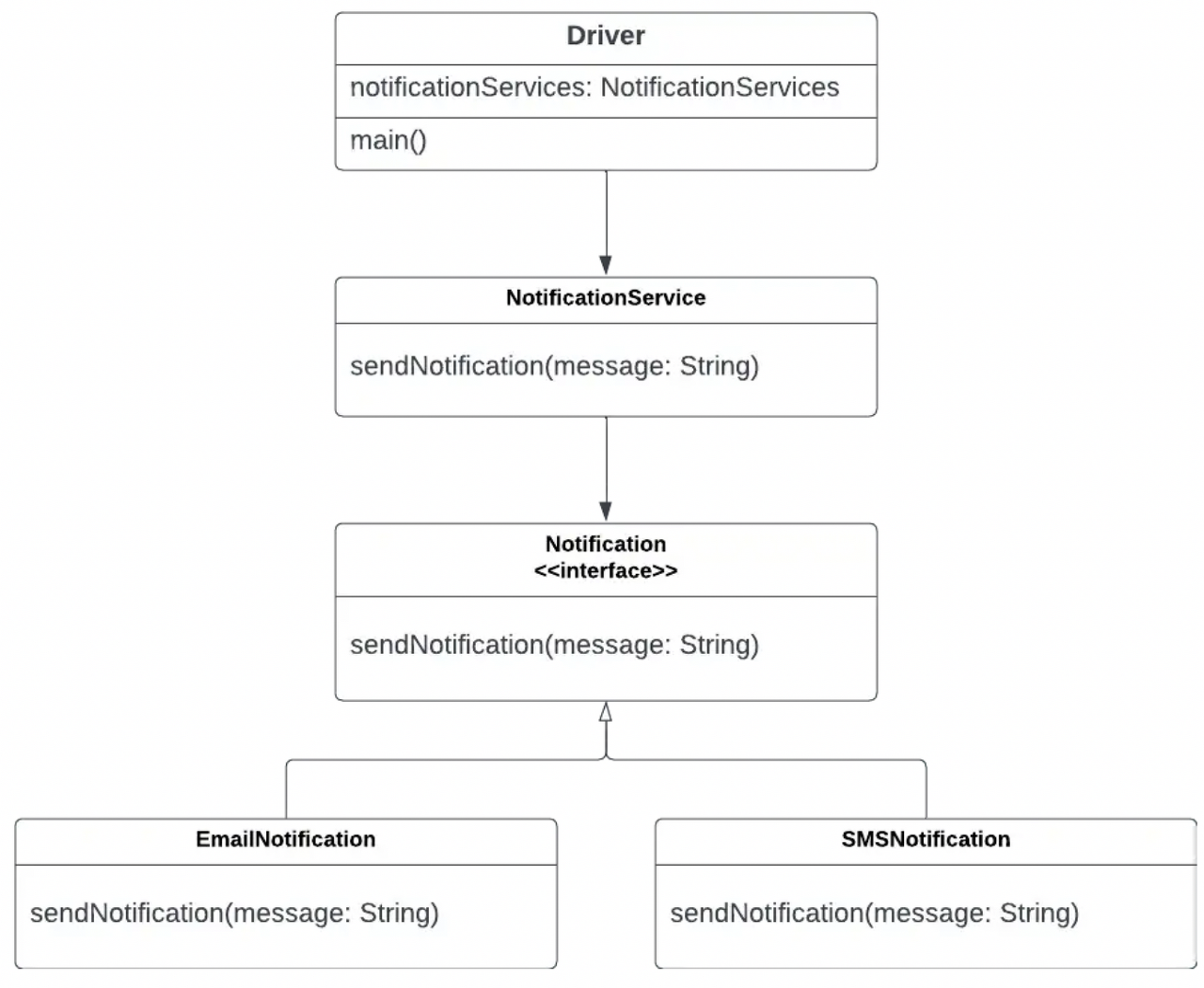SOLID 설계란 무엇인가?
- S : Single Responsibility Principle (SRP) = 단일 책임 원칙
- O : Open/Closed Principle (OCP)
- L : Liskov Substitution Principle (LSP) = 리스코프 치환 원칙
- I : Interface Segregation Principle (ISP) = 인터페이스 분리 원칙
- D : Dependency Inversion Principle (DIP) = 의존성 반전 원칙
SOLID 설계를 통해 이하기 쉽고 변경하기 쉬운 코드를 만들 수 있습니다.
하지만 반드시 모든 앱을 만들 때 SOLID 설계를 적용할 필요는 없으며 자신의 프로젝트에 적절하게 사용하면된다.

"이 포스팅은 쿠팡 파트너스 활동의 일환으로, 이에 따른 일정액의 수수료를 제공받습니다."
S - 단일 책임 원칙(SRP)
- SOLID 설계에서 S에 해당하는 부분이다
- 모듈은 하나의 일만 처리해야한다
- 모듈은 하나의 소스 파일을 의미한다
- 아래와 같은 소스 파일이 있다고 생각한다
class Order {
fun sendOrderUpdateNotification() {
// sends notification about order updates to the user.
}
fun generateInvoice() {
// generates invoice
}
fun save() {
// insert/update data in the db
}
}자세히 보면 위의 Order class는 복수의 책임을 갖는다
- Oder라는 소스 파일(모듈) 안에 다수의 역할을 하는 함수(fun)가 들어있다
그렇기 때문에 아래와 같이 바꿀 수 있다
data class Order(
val id: Long,
val name: String,
// ... other properties.
)class OrderNotificationSender {
fun sendNotification(order: Order) {
// send order notifications
}
}class OrderInvoiceGenerator {
fun generateInvoice(order: Order) {
// generate invoice
}
}class OrderRepository {
fun save(order: Order) {
// insert/update data in the db.
}
}하나의 클래스가 하나의 역할만 갖게 되었다
사용할 때는 다음과 같이 하나의 클래스에 책임을 위임하여 사용할 수 있다

class OrderFacade(
// 각각의 클래스 변수를 받는다 = 1개의 클래스가 1개의 책임을 가짐
private val orderNotificationSender: OrderNotificationSender,
private val orderInvoiceGenerator: OrderInvoiceGenerator,
private val orderRepository: OrderRepository
) {
fun sendNotification(order: Order) {
// sends notification about order updates to the user.
orderNotificationSender.sendNotification(order)
}
fun generateInvoice(order: Order) {
// generates invoice
orderInvoiceGenerator.generateInvoice(order)
}
fun save(order: Order) {
// insert/update data in the db
orderRepository.save(order)
}
}- 하지만 이렇게 모든 클래스에 단일 책임을 부여하면 클래스 파일이 기하급수로적으로 늘어나게 된다
- 그렇기 때문에 SOLID 설계를 완벽하게 적용하는 것 보다 적절하게 적용하는 편이 좋다…
O - OCP(Open/Closed Principle)
- SOLID 설계에서 O에 해당하는 부분이다
- Open/Closed Principle 정의를 하자면 다음과 같다
소프트웨어 아티팩트는 확장을 위해 열어야 하지만 수정을 위해 닫아야 한다.
즉, 소프트웨어 아티팩트의 동작은 아티팩트를 수정할 필요 없이 확장 가능해야 한다.
- OCP를 위반하는 예시
enum class Notification {
PUSH_NOTIFICATION, EMAIL
}class NotificationService {
fun sendNotification(notification: Notification) {
// notificagion의 값에 따라 다른 작업을 실행하게 한다
when (notification) {
Notification.PUSH_NOTIFICATION -> {
// send push notification
}
Notification.EMAIL -> {
// send email notification
}
}
}
}딱히 실행하는데 문제가 되지도 않고 OCP를 위반하는거도 없어보입니다.
하지만, 여기서 새로운 Notification을 추가할 경우 어떻게 될까요?
NotificationServiceSMS를 추가해야한다고 가정하면 아래와 같이 될 것입니다
enum class Notification {
PUSH_NOTIFICATION, EMAIL, SMS
}class NotificationService {
fun sendNotification(notification: Notification) {
when (notification) {
Notification.PUSH_NOTIFICATION -> {
// send push notification
}
Notification.EMAIL -> {
// send email notification
}
Notification.SMS -> {
// send sms notification
}
}
}
}여기서 눈치 챘을지 모르겠지만
새로운 값을 추가할 때 마다 NotificationService를 수정해야합니다.
그렇기 때문에 OCP를 위반한다라고 볼 수 있습니다.
- 이는 다음과 같은 방법으로 해결할 수 있습니다.
// 클래스가 아닌 인터페이스를 만든다
interface Notification {
fun sendNotification()
}그리고 각각의 Notification에 대한 클래스 파일을 만든다.
// Notification interface를 상속 받으며
class PushNotification : Notification {
// 각 함수를 재정의 하는 형태로 구현한다
override fun sendNotification() {
// send push notification
}
}class EmailNotification : Notification {
override fun sendNotification() {
// send email notification
}
}이를 통합해줄 NotificationService라는 클래스 파일을 만든다
class NotificationService {
fun sendNotification(notification: Notification) {
notification.sendNotification()
}
}이렇게 하면 관련 Notification 파일을 수정하지 않고 다음과 같이 파일을 추가하기만 해서 새로운 기능을 추가할 수 있게 된다
class SMSNotification : Notification {
override fun sendNotification() {
// send sms notification
}
}- 이렇게 interface를 활용하면 공통된 부분을 활용함과 동시에 필요에 따라 재정의 해서 사용할 수 도 있다
- OCP 또한 100% 지키기 매우 어렵기 때문에 코드를 짤 때 항상 의식하며 적절히 사용하는 것이 중요하다
L - Liskov Substitution Principle(LSP)
- SOLID 설계에서 L에 해당하는 부분이다
- 정의하자면 다음과 같다
자료형 S가 자료형 T의 하위형이라면 필요한 프로그램의 속성의 변경 없이 자료형 T의 객체를 자료형 S의 객체로 치환할 수 있어야 한다
좀 더 간단히 말하자면
똑같이 사용했을 때 자식 객체는 부모객체의 능력을 그대로 사용할 수 있어야한다.
(이거에 대한 자세한 설명은 다른 포스팅에서 진행하겠습니다)
바로 예시로 넘어가면 다음과 같은 코드를 만들 예정입니다.
- 쓰레기를 받아서 분류를 하는 서비스

interface Waste {
fun process()
}
Waste interface를 상속받는 클래스 구현
class OrganicWaste : Waste {
override fun process() {
println("Processing Organic Waste")
}
}
class PlasticWaste : Waste {
override fun process() {
println("Processing Plastic Waste")
}
}
이 둘을 사용하는 클래스 구현
class WasteManagementService {
fun processWaste(waste: Waste) {
waste.process()
}
}이를 사용하는 함수 정의
- 똑같이 wasteManagementService의 processWaste를 호출하지만 서로 영향을 주지 않고 같은 처리를 하고 있기 때문에 리스코프 치환 원칙을 만족한다
fun main() {
val wasteManagementService = WasteManagementService()
var waste: Waste
waste = OrganicWaste()
wasteManagementService.processWaste(waste) // Output: Processing Organic Waste
waste = PlasticWaste()
wasteManagementService.processWaste(waste) // Output: Processing Plastic Waste
}I - 인터페이스 분리 원칙(ISP)
- SOLID 설계에서 I에 해당하는 부분이다
- 정의는 다음과 같다
- 사용하지 않는 인터페이스를 상속하는 클래스에서 불필요한 메서드를 구현하도록 강요해선 안된다
- 나쁜 예시
interface OnClickListener {
fun onClick()
fun onLongClick()
}인터페이스를 이렇게 정의했을 경우 다음과 같이 항상 onClick()과 onLongClick()을 둘 다 정의해야한다
class CustomUIComponent : OnClickListener {
override fun onClick() {
// handles onClick event.
}
// left empty as I don't want the [CustomUIComponent] to have long-click behavior.
override fun onLongClick() {
}
}- 이를 해결하기 위해선 그냥 interface를 나누면된다
interface OnClickListener {
fun onClick()
}interface OnLongClickListener {
fun onLongClick()
}그리고 필요한 인터페이스만 상속해서 사용한다
class CustomUIComponent : OnClickListener {
override fun onClick() {
// handle single-click event
}
}D - Dependency Inversion Principle(DSP; 의존성 반전 원칙)
- SOLID 설계에서 D에 해당하는 부분이다
- 정의는 다음과 같다
- 프로젝트는 서로 독립된 모듈을 갖고 있다
- 하위 모듈은 상위 모듈을 참조(의존)하고
- 상위 모듈은 하위 모듈을 참조(의존)할 수 없다
- 이를 “의존성 반전 원칙” 이라고 부른다
- 간단히 말하면 “쉽게 변하지 않는 요소에만 의존하되 상위 모듈은 하위 모듈에 의존할 수 없다”이다
- 예시 코드
class ClassA {
fun doSomething() {
println("Doing something")
}
}
class ClassB {
fun doIt() {
// ClassB 는 ClassA가 반드시 있어야만 사용할 수 있다 = 즉, ClassA에 대해 의존성을 가진다
val classA = ClassA()
classA.doSomething()
}
}- 다음과 같이 의존성을 가지는 프로그램이 있다고 가정

이메일을 보내는 Notification
class EmailNotification {
fun sendNotification(message: String) {
println("Sending email notification with message \"$message\"")
}
}
실질적으로 Notification을 보내는 부분
class NotificationService {
fun sendNotification(message: String) {
// 이 부분에서 반드시 EmailNotification에 의존함
val emailNotification = EmailNotification()
emailNotification.sendNotification(message)
}
}
- 실행 함수
fun main() {
val notificationService = NotificationService()
// Output: Sending email notification with message "Happy Coding"
notificationService.sendNotification("Happy Coding")
}
- 여기까지만 하면 의존성에는 문제가 없지만 다른 유형의 Notification을 보낼 수 없다는 문제가 있다
- 다음과 같은 방법으로 의존성을 제거하고 NotificationService가 Email뿐 아니라 다른 유형의 Notification을 보내게 할 수 있다

interface Notification {
fun sendNotification(message: String)
}
class EmailNotification : Notification {
override fun sendNotification(message: String) {
println("Sending email notification with message \"$message\"")
}
}
class SmsNotification : Notification {
override fun sendNotification(message: String) {
println("Sending sms notification with message \"$message\"")
}
}
fun main() {
val message = "Happy Coding"
val notificationService = NotificationService()
var notification: Notification
notification = EmailNotification()
notificationService.notification = notification
notificationService.sendNotification(message)
// Output: Sending email notification with message "Happy Coding"
notification = SmsNotification()
notificationService.notification = notification
notificationService.sendNotification(message)
// Output: Sending sms notification with message "Happy Coding"
}
이렇게 독립된 의존성과 OCP를 동시에 만족할 수 있다
SOLID 설계의 한 줄 정의
- SRP: 각 소프트웨어 모듈은 하나의 역할만 담당해야한다
- OCP: 소프트웨어 시스템은 변경이 용이해야 한다. 기존 코드를 변경하는 것이 아니라 새로운 코드를 추가하여 시스템 동작을 변경할 수 있도록 설계해야 한다.
- LSP: 교환 가능한 부품으로 소프트웨어 시스템을 구축하려면 해당 부품을 서로 교환할 수 있는 계약에 따라야 합니다.
- ISP: 소프트웨어 설계자는 사용하지 않는 항목에 의존하지 않도록 해야 한다.
- DIP: 상위 수준의 정책을 구현하는 코드는 하위 수준의 세부 정보에 의존해서는 안 됩니다.
'안드로이드(kotlin)' 카테고리의 다른 글
| registerForActivityResult 사용 방법과 startActivityForResult가 Deprecated된 이유 (3) | 2023.01.07 |
|---|---|
| 리사이클러뷰의 생명주기 분석 및 메모릭의 원인 (0) | 2023.01.05 |
| Navigation을 사용한 화면 이동 시 라이프사이클 변화 (1) | 2022.12.24 |
| LicenseToolsPlugin을 사용해서 자동으로 라이센스 공개하기 (1) | 2022.12.22 |
| Firebase의 analytics로 DebugView 쓰기 (2) | 2022.12.18 |
"이 포스팅은 쿠팡 파트너스 활동의 일환으로, 이에 따른 일정액의 수수료를 제공받습니다."





댓글